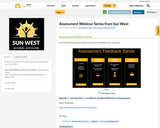
In this series we explore the world of assessment and feedback in our new reality.
- Subject:
- Education
- Material Type:
- Primary Source
- Date Added:
- 05/14/2020

In this series we explore the world of assessment and feedback in our new reality.

This is a collection of excellent articles related to assessment best practices and using assessments as a tool to empower students.
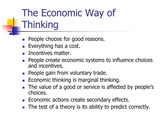
Students will answer the following multiple-choice questions regarding how microeconomic principles can really impact how individuals make financial decisions. A presentation is attached with some definitions and information that may assisst with completing this assignment. Answer key can be found in the Teacher Only Discussion section of the Resource Bank. https://resourcebank.ca/groups/financial-literacy-teachers/254/discussions/

Answer the following questions in complete sentences regarding how microeconomic principles can really impact how individuals make financial decisions.

Module 33 MacroeconomicsAssignment Instructions: Answer the following questions regarding how macroeconomic principles can really impact how individuals make financial decisions.
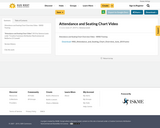
Attendance and Seating Chart Overview Video - SWSD Training
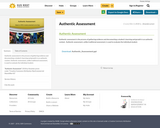
Authentic assessment is the process of gathering evidence and documenting a student’s learning and growth in an authentic context. Authentic assessment, unlike traditional assessment, is used to evaluate the individual student.

The following document contains possible assessments to benchmark reading, writing and math. The document orivudes a list with links to resources that may be used to measure growth. These benchmark assessments can be sued to support your work with Personalized Goals (PGs) in your school.
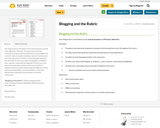
Your blog project is intended to serve several purposes and fill many objectives:
Purposes:
To express your personal responses to projects and learning that occurs throughout the course
To make connections between classroom learning and your own experiences
To reflect on learning opportunities in the classroom
To share your ideas and thoughts an audience – peers, parents, community (local/global)
To share your voice about issues and topics related to this course
To link to websites and sources with related materials
Objectives:
Share and present ideas
Make connections
Reflect on learning
Demonstrate respectful communication in an online environment
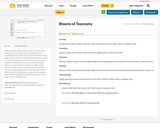
Creating
arrange, blend, deduce, devise, construct, create, design, present, rearrange, rewrite, synthesize, write
Evaluating
appraise, argue, award, critique, defend, interpret, judge, measure, select test, verify
Analyzing
Classify, compare, contrast, test, distinguish, determine, form, generalizations, categorize, illustrate, select, survey, transform
Applying
Choose, convert, determine, demonstrate, differentiate, discover, discuss, examine, experiment, prepare, produce, record, use
Understanding
classify, describe, demonstrate, discriminate, fill in, find, identify, outline, predict, represent, trace
Remembering
acquire, define, lable, list, match, read, recall, retrieve, recognize, state

This booklet contains 7 chapters on topics related to how to earn, save, budget, spend, borrow, protect and give money. Whether you get a weekly allowance or get paid for walking your neighbor’s dog, your first step in handling your money well is to think about short-term and long-term goals. Then make a plan to reach them. It takes a bit of practice to master your money, just like it takes time to learn to ride a bike. But once you get the hang of it, you’ll be ready to tackle all sorts of money twists and turns.

This activity contains three case studies which allow students to evaluate situations that are considered when budgeting. The students will create budgets for the individuals in the cases as part of this assignment.
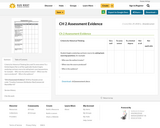
Criteria for Historical Thinking Very well To some extent To a limited degree Not at all Not
applicable
Student begins analyzing a primary source by asking basic sourcing questions, for example:
– Who was the author/creator?
– When was the source produced?
– Who is the audience?

Students will learn the consequences of not paying one’s debts and the choices of last resort for out-of-control debt. Students will explain how using [types of predatory loans] can cause a vicious cycle of debt. Bankruptcy is also introduced, and the various costs associated with bankruptcy are outlined. The students will discover what steps a person can take to avoid filing for bankruptcy, including seeing a credit counselor.

Criteria for Historical Thinking
Very well To some extent To a limited degree Not at all Not applicable
...
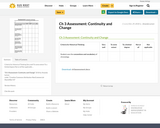
Criteria for Historical Thinking
Very well To some extent To a limited degree Not at all Not applicable
...
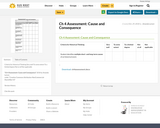
Criteria for Historical Thinking
Very well To some extent To a limited degree Not at all Not applicable
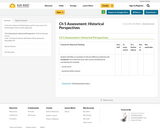
Criteria for Historical Thinking
Very well To some extent To a limited degree Not at all Not applicable
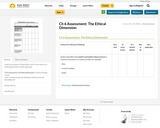
Criteria for Historical Thinking
Very well
To some extent
To a limited degree
Not at all
Not applicable

Modules for teachers include:
*Overview & Syllabus
*Intro
*Readiness Pre-Assessment
*Formative Assessment
*Data Informed Instruction
*Summative Classroom Assessment
*Putting the Pieces Together
Classroom Assessment in a Remote Learning Environment